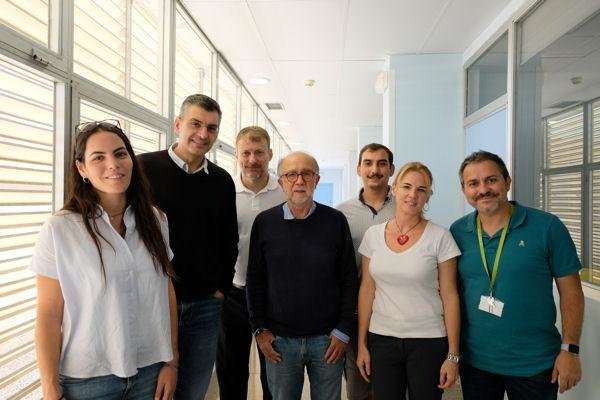Non-invasive stent monitoring techniques tested

A multi-institutional collaborative of researchers has created a new field probe for noninvasive and non-ionizing monitoring of the presence of metallic stents as well as their potential structural failures through microwave spectrometry (MWS). The results are published in the journal Scientific Reports.
Coronary artery disease (CAD) is the main cause of death in developed countries. It is usually caused by atherosclerosis, characterized by accumulation of cholesterol and other fatty substances in artery walls that can create coagula such as angina or heart attack. Treatment for CAD comprises changes in the lifestyle to modify coronary risk factors and several drugs, but when coronary obstructions are important, it is necessary to carry out a revascularization treatment through percutaneous coronary intervention (PCI) or coronary surgery.
PCI is a minimally invasive procedure which involves balloon dilatation in the obstructed area and the introduction of a small stent. In some cases, and over time, the coronary stent can fail due a restenosis process of cell proliferation in the vascular wall that ends up blocking the vessel, or a thrombosis process in which a stent obstruction occurs due the formation of a thrombus. Several phenomena have been related to a higher risk of these failures—through a fracture process of the stent metallic structure, or sometimes through a lack of contact between the artery wall and the stent (incomplete stent apposition). In other cases, an incomplete expansion of the stent can occur, reducing its thickness.
There isn't any available technology to non-invasively detect such phenomena as fracture, incomplete stent apposition or incomplete expansion, even the presence of restenosis. "Invasive techniques like coronary angiography, intravascular echography and optical coherence tomography are expensive and cannot be used on all patients with coronary stents," says Carolina Gálvez Montón, first author of the article and member of the IGTP and CIBERCV. In addition, these techniques are complex and require specific equipment that is not available in all hospitals.
"The MWS probe consists of a small device that produces electromagnetic waves similar to the ones in a mobile phone, and detects modifications that occur in that wave due to the stent," says Ferran Macià, UB researcher from the Magnetism Group of the Department of Condensed Matter Physics of the UB.
In order to test this new probe, researchers "carried out the stent subcutaneous implantation in a murine model where we detected the presence of devices as well as restenosis-derived changes and fracture through variation of resonance frequency, common in microwave absorption spectra, which reflect the occurrence of changes in the length and the diameter of the stent," says Gálvez-Montón.
In particular, the study included five control animals, with a subcutaneous stent implantation simulation, and 10 experimental animals in which a metallic stent was introduced in the interscapular region. Basal measurements were carried out before and after the stent implantation on the days 0, 2, 4, 7, 14, 21 and 29 of monitoring. In addition, five animals from the experimental group were analyzed through MicroCT in the same study time periods. After 29 days, three animals were subject to a stent fracture.
As a result, since the stents colonized with fibrotic tissue as a natural response to its subcutaneous implantation, the new probe detected significant differences of its content from its basal implementation to its 30 days of monitoring (restenosis). Finally, researchers could differentiate through microwave spectrometry those stents that were fractured to the ones that were still complete.
Antoni Bayés Genís, researcher from the IGTP and CIBERCV, says, "We need more studies to verify these results and we think it is necessary to move these experiments to a pre-clinical model in animal models that are similar to humans, and if corroborated, this technology should be validated in a small cohort of patients."
"We are working on the technological aspects that will allow us to conduct pre-clinical experiments and their implications in a future clinical application," says Joan O"Callagan, researcher in CommSensLab (UPC), "this involves, among other things, the development of devices with the ability to detect stents at increased depths and detection techniques that tolerate the movement of stents in coronary arteries."
More information: Carolina Gálvez-Montón et al, Ex vivo assessment and in vivo validation of non-invasive stent monitoring techniques based on microwave spectrometry, Scientific Reports (2018). DOI: 10.1038/s41598-018-33254-9
















